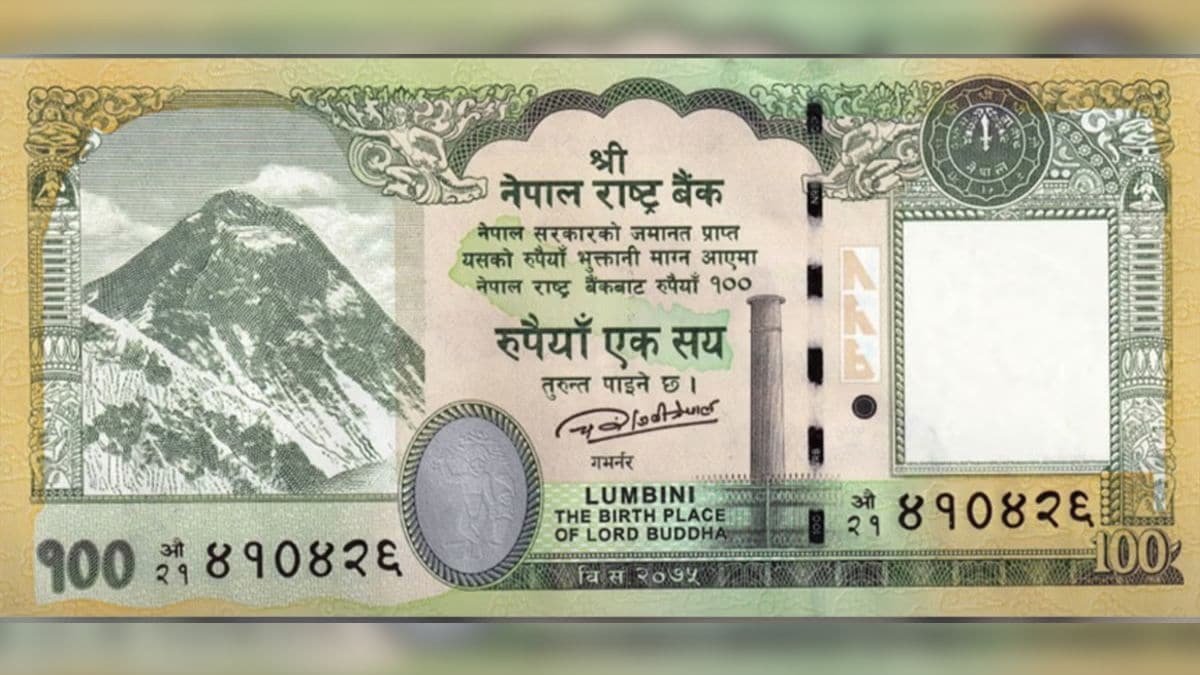Nepal’s decision to redesign its 100-rupee currency note has sparked a fresh wave of tension between Kathmandu and New Delhi, with the primary cause being the inclusion of disputed border territories in the new map.
This decision, entailing the involvement of a Chinese printing company, has fuelled political and strategic sensitivities.
Nepal chooses China for new currency production
The Nepal Rastra Bank (NRB), the central bank of Nepal, has granted China Banknote Printing and Minting Corporation a contract to design, print, and deliver 300 million copies of the redesigned 100-rupee banknote.
The printing cost has been pegged at around USD 8.99 million, averaging 4 rupees and 4 paisa per note. The note will bear Nepal’s revised political map, which incorporates the contested regions of Lipulekh, Limpiyadhura, and Kalapani.
Nepalese Minister of Communication Rekha Sharma, affirming the government’s stance, telling ANI, “The government has authorised the Nepal Rastra Bank to replace the current map with the updated version on the currency note.”
This
decision was taken at the time of the Pushpa Kamal Dahal government in May this year and followed a formal tendering process and a subsequent letter of intent by the NRB.
“This is to notify you that it is our intention to award the contract for execution of the Procurement of the Designing, Printing, Supply and Delivery of 300 Million Pieces of Nepalese Rupees 100 Denomination Circulation Banknotes and Related Services (IFB No. NRB/CMD/ICB/G-03/080/81) to you as your bid price USD 8,996,592.00… as corrected and modified in accordance with the Instructions to Bidders is hereby selected as substantially responsive lowest evaluated bid,” the central bank’s letter stated.
All about the India-Nepal border dispute
The Nepal-India border row dates back to 1816, following the Sugauli Treaty signed between Nepal and British India after the Anglo-Nepalese War.
According to this treaty, the Kali River was designated as the natural western border of Nepal, with territories east of it — encompassing Lipulekh, Limpiyadhura, and Kalapani — belonging to Nepal. Despite this, these territories have been under India’s administrative control since the 1960s.
Tensions over this territorial issue spiked in November 2019 when India released a new political map that included these disputed regions within its boundaries. Nepal countered in May 2020 by publishing its own revised political map that claimed these areas as Nepalese.
Foreign Minister S Jaishankar criticised Nepal’s unilateral action, stating, “Our position is very clear. With Nepal, we are having discussions about our boundary matters through an established platform. In the middle of that, they unilaterally took some measures on their side… But by doing something on their side, they are not going to change the situation between us or the reality on the ground.”
Why China?
Awarding the printing contract to China’s state-owned corporation has further complicated the issue. According to reports from English daily Republica, the selection of China Banknote Printing and Minting Corporation occurred following an open global tender.
Also Read:
What Nepal’s new ‘pro-China’ PM KP Sharma Oli means for India
Yet, given the strategic tension in the India-China-Nepal tri-border region, the Chinese involvement has raised eyebrows. Observers in India suggested that Nepal’s government, at the time under Prime Minister Pushpa Kamal Dahal, may be using the currency redesign to appeal to nationalist sentiments.
Is this putting India-Nepal ties at risk?
Experts have warned that Nepal’s new banknote move may erode the historically strong, multi-faceted relationship between the two countries, which includes open borders, shared cultural ties, and significant economic cooperation.
With a 1,750-km border shared across five Indian states — Sikkim, West Bengal, Bihar, Uttar Pradesh, and Uttarakhand — the potential fallout from this issue is substantial.
Then Nepal’s Foreign Minister Narayan Kaji Shrestha had expressed a willingness for diplomatic engagement, saying, “We want to resolve the boundary issue with India. We want to fix it through diplomatic means and through table talks. We are taking an initiative for this,” as quoted by The Kathmandu Post. However, whether this will be enough to bridge the gap remains uncertain.
Why are the disputed areas crucial for Nepal & India?
India views the inclusion of Lipulekh, Limpiyadhura, and Kalapani on Nepal’s currency as a bid for territorial assertion that could disrupt regional stability.
In May 2020, Nepal intensified claims over the disputed regions shortly after India inaugurated an 80-kilometre road through Lipulekh, connecting the Indian state of Uttarakhand to Tibet’s Kailash Mansarovar. This road was seen as strategically significant for both trade and regional security, as it provides a practical route to Tibet from India.
India has voiced strong objections to Nepal’s ongoing efforts to establish these regions as Nepalese, calling it an “untenable” claim that amounts to an “artificial enlargement” of Nepal’s borders.
The disputed land measures roughly 335 square kilometres, a modest area yet significant due to its strategic location at the India-Nepal-China tri-junction.
Beyond the dispute: Nepal-India ties strong
Despite the border strain, Nepal and India share extensive ties, from religious and cultural exchanges to economic investments. India remains Nepal’s largest trade partner, with substantial investments in infrastructure projects
such as hydropower plants.
However, without diplomatic resolution on the boundary issue, the bond between the two nations may be adversely affected.
For now, both nations appear determined to hold their respective positions.
Also Watch:
With inputs from agencies





